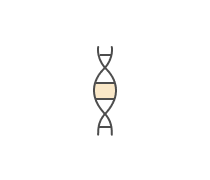Where does digestion begin?
The basic building block of a protein is called a(n)
Body weight in kilograms divided by height squared in meters...
Margaret, an elderly woman, needs to limit her kcalorie intake without...
Constipation can best be prevented by
The nutrient essential for synthesis of several blood clotting factors...
What is the major monosaccharide found in the body?
This mineral can be protective for the teeth when introduced into the...
If a fat contains mostly saturated fatty acids, it is likely to...
Which of the following hormones corrects a hyperglycemic state?
Which of the following contains a rich supply of omega-3 fatty...
This vitamin, when consumed during pregnancy, can help prevent neural...
Which of the following is not true about water?
Most digestion takes place in the
The major chloride source in the diet is
Which of the following is true about the absorption, transport, and...
The muscular contractions that move food through the digestive tract...
Which of the following is true about the way we should eat to achieve...
The childhood disease rickets is due to a deficiency.
The function of thick mucus in the stomach is to
Which of the following nutrients can directly supply energy for human...
Vitamin E functions as a(n)
Which of the following are substances in plant foods that are not...
Fibers belong to the class of nutrients known as
The chemical element found in all amino acids but not found in either...
Which of the following is a major source of lactose?
One would be likely to see positive protein balance in all of the...
What structure prevents food from entering the trachea when you...
Which of the following statements does not describe the role of...
Starch is comprised of hundreds and perhaps thousands of which...
The nitrogen from amino acid breakdown is
The RDA for nutrients generally are
Lactose intolerance is caused by
A goiter may form as a consequence of an inadequate intake of
All of the following are characteristic of cholesterol except
Which of the following statements is true about iron?
What disease is caused by a thiamin deficiency?
Most weight loss programs result in
Which of the following is characteristic of bulimics?
A disorder in which frequent bingeing and possibly purging occurs is...
A kcalorie is a measure of
Scurvy can be prevented with adequate intakes of
In which form are most dietary lipids found?
Acquiring sufficient vitamin B12 from the diet may be a problem to...
The B vitamins generally function as
Which statement about vitamins is true?
Cooking an egg alters its appearance due to
As one finds his or her weight loss slowing during a weight control...
The most long-term success in anorexia nervosa treatment has been...
A saturated fatty acid contains
Vitamins involved in red blood cell synthesis are
Burt is a wrestler. His weight is regularly higher than the weight...
If you wanted to add significant quantities of vitamins and minerals...
Most vitamin A is stored in the
A rich source of vitamin E is
A difference between anorectics and bulimics is that
What is magnesium's primary function?
When looking at the ingredient label of a bottled spaghetti sauce, you...
Basal metabolism is
A person with anorexia nervosa is likely to
Which of the following is not a benefit of physical fitness?
Which of the following is true about carbohydrate digestion?
All the following are true of anorexia nervosa except
The most significant factor promoting eating disorders in North...
Legumes (dry beans) are in which Food Guide Pyramid group?
Which of the following is characteristic of lipids?
If the diet is lacking an essential amino acid, what will be the...
Lowering blood pressure is associated with which of the following...
Which of the following is not characteristic of individuals who...
If a woman athlete is not menstruating regularly, she should do all...
A major characteristic of an anorectic that significantly inhibits...
Which of the following is not a monosaccharide?
The issue of sports drinks and their use is critical for
When protein consumption is in excess of body needs and energy needs...
Healthy People 2010 was designed to
Water constitutes ______ percent of body weight.
An essential amino acid
Which of the following is converted to vitamin A in the body?
All the following are sources of cholesterol except
Niacin is necessary to prevent the disease
All the following statements about many popular diets are true...
Aerobic glucose breakdown provides most of the energy for sports...
To be transported throughout the body, fats are packaged in structures...
The thermic effect of food
The body energy that can be stored in almost unlimited amounts...
Nutrient density can be defined as
The semistarvation of anorexia nervosa results in all the following...
A daily deficit of 500 kcalories should result in a weight loss of...
Which characteristic is more indicative of bulimia than anorexia...
The best way to determine how much fluid must be replaced as a result...
Which statement best describes nutrient density?
The nutrient that can be considered both a vitamin and a hormone...
A suboptimal intake of chromium in individuals in the U.S. may be...
Which of the following is not associated with an increase in basal...
Thermogenesis refers to all of the following except
Which of the following vitamins has been helpful in large doses as a...
Which of the following testing methods is considered the most accurate...
Which of the following is true about the protein intake for...
The method for determining energy expenditure in which the amount of...
Carbohydrate loading
Loss of menstrual periods associated with anorexia nervosa is caused...
For every pound lost during a workout, cup(s) of water should be...
Most of the health problems in bulimia arise from
Physical activity
What is the name of the condition characterized by disordered eating,...
















